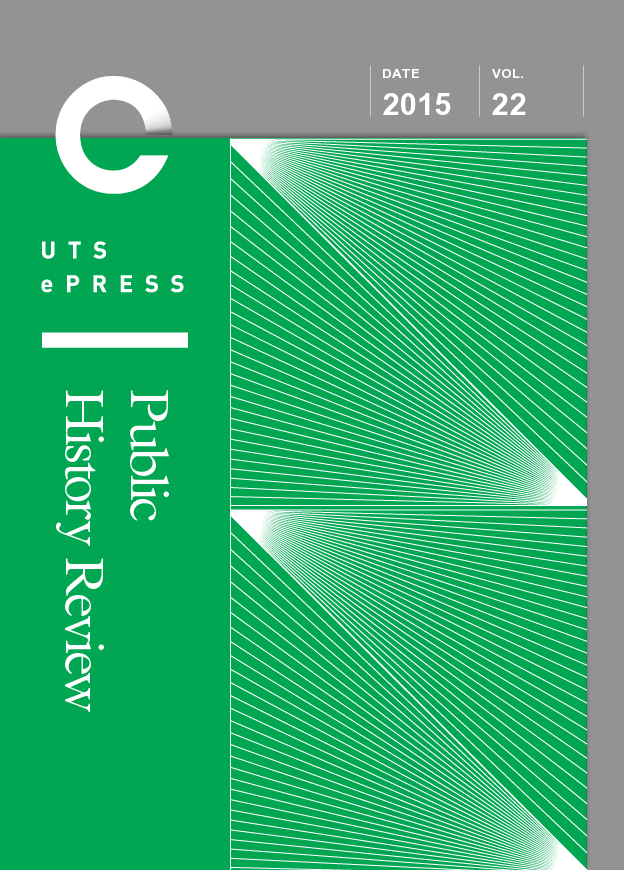'Manxness': The Uses of Heritage on the Isle of Man
Main Article Content
Abstract
Article Details
Issue
Section
Authors who submit articles to this journal from 31st March 2014 for publication, agree to the following terms:
a) Authors retain copyright and grant the journal right of first publication with the work simultaneously licensed under a Creative Commons Attribution License that allows others to share and adapt the work with an acknowledgement of the work's authorship and initial publication in this journal.
b) Authors are able to enter into separate, additional contractual arrangements for the non-exclusive distribution of the journal's published version of the work (e.g., post it to an institutional repository or publish it in a book), with an acknowledgement of its initial publication in this journal.
c) Authors are permitted and encouraged to post their work online (e.g., in institutional repositories or on their website) prior to and during the submission process, as it can lead to productive exchanges, as well as earlier and greater citation of published work (See The Open Access Citation Advantage Service). Where authors include such a work in an institutional repository or on their website (ie. a copy of a work which has been published in a UTS ePRESS journal, or a pre-print or post-print version of that work), we request that they include a statement that acknowledges the UTS ePRESS publication including the name of the journal, the volume number and a web-link to the journal item.
d) Authors should be aware that the Creative Commons Attribution (CC-BY) License permits readers to share (copy and redistribute the work in any medium or format) and adapt (remix, transform, and build upon the work) for any purpose, even commercially, provided they also give appropriate credit to the work, provide a link to the license, and indicate if changes were made. They may do these things in any reasonable manner, but not in any way that suggests you or your publisher endorses their use.
For Vol 20 (2013) and before, the following copyright applied:
Authors submitting articles to UTSePress publications agree to assign a limited license to UTSePress if and when the manuscript is accepted for publication. This license allows UTSePress to publish a manuscript in a given issue. Articles published by UTSePress are protected by copyright which is retained by the authors who assert their moral rights. Authors control translation and reproduction rights to their works published by UTSePress. UTSePress publications are copyright and all rights are reserved worldwide. Downloads of specific portions of them are permitted for personal use only, not for commercial use or resale. Permissions to reprint or use any materials should be directed to UTSePress.
References
ANG, I. 2010. Between Nationalism and Transnationalism: Multiculturalism in a Globalising World. Institute for Culture and Society Occasional Paper Series, 1, 5.
Belchem, J. 2000. The Little Manx Nation: Antiquarianism, Ethnic Identity, and Home Rule Politics in the Isle of Man, 1880-1918. Journal of British Studies, 39, 218. https://doi.org/10.1086/386217
Cheek, C., Nicol, S. & Grainger, S. 2012. Manx Identity and the Comeovers. In: Matthews, J. & Travers, D. (eds.) Islands and Britishness: A Global Perspective. Newcastle upon Tyne: Cambridge Scholars Publishing.
ERNEST & YOUNG. 2012. Isle of Man: Economic Research Report, May 2012 [Online]. Available: http://goo.gl/zmmkul [Accessed 28 September 2015].
Gilmour, T. 2009. Sustaining Heritage: Giving the Past a Future, Sydney, Sydney University Press.
Harrison, R. 2009. What is Heritage? In: Harrison, R. (ed.) Understanding the Politics of Heritage. Manchester: University of Manchester Press.
Harrison, S. 2002. Culture, Tourism and Local Community – the Heritage Identity of the Isle of Man. Brand Management, 9, 359. https://doi.org/10.1057/palgrave.bm.2540083
Hewison, R. 1987. The Heritage Industry: Britain in a Climate of Decline, London, Metheun.
Kermode, D. G. 2001. Offshore Island Politics: The Constitutional and Political Development of the Isle of Man in the Twentieth Century, Liverpool, Liverpool University Press. https://doi.org/10.5949/UPO9781846313691
Lowenthal, D. 1996. Possessed by the Past: The Heritage Crusade and the Spoils of History, Free Press, New York.
Mackie, C. 2013. Open-Air Museums, Authenticity and the Shaping of a Cultural Identity: An Example from the Isle of Man. In: Dalglish, C. (ed.) Archaeology, the Public and the Recent Past. Suffolk: Boydell and Brewer.
Maddrell, B. 2002. Speaking from the Shadows: Sophia Morrison and the Manx Cultural Revival. Folklore, 113, 230. https://doi.org/10.1080/0015587022000015
MCCLOSKEY, J. 2008. Irish as a World Language. Available: http://ohlone.ucsc.edu/~jim/PDF/notre-dame.pdf [Accessed 15 May 2015].
MURRAY, F. 2012. The European Union and Member State Territories: A New Legal Framework Under the EU Treaties, The Hague, Amsterdam, T.M.C. Asser Press.
O'Néill, D. 2002. Rebuilding the Celtic Languages: Reversing Language Shift in Celtic Countries, Wales, Y Lofta.
Smith, L. 2006. Uses of History, New York, Routledge.
Stevenson, G. 2006. Parallel Paths: The Development of Nationalism in Ireland and Quebec, Montreal, McGill-Queens University Press.
Travers, D. & Heathorn, S. 2008. Collective Remembrance, Second World War Mythology, and National Heritage of the Isle of Man. National Identities, 10, 442. https://doi.org/10.1080/14608940802519078
